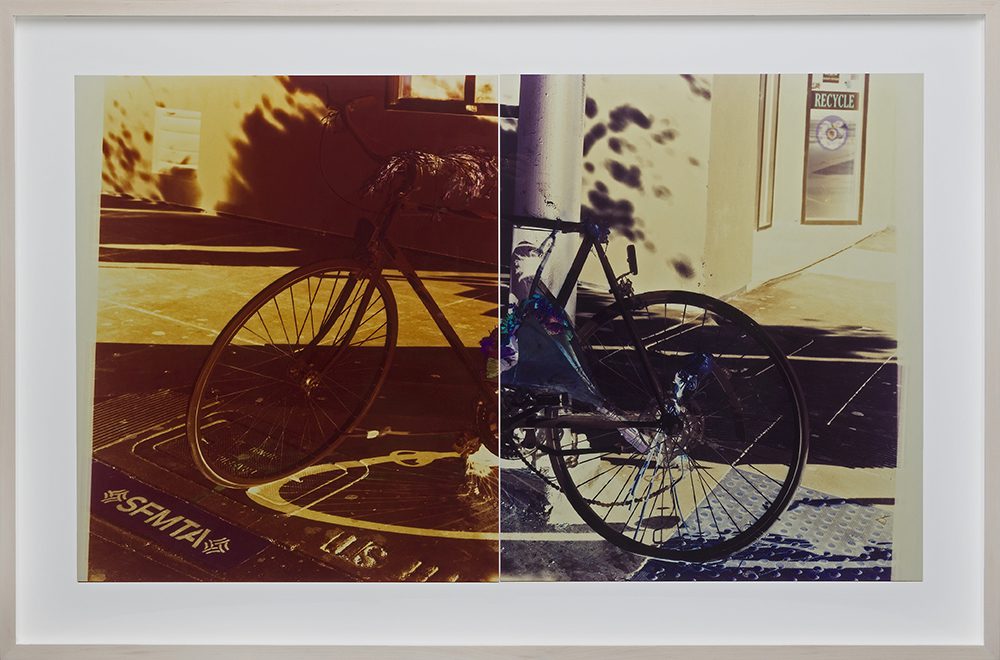
The dwindling availability of the basics of darkroom craft–film, chemistry and paper–has prompted me to consider, “What makes a photograph, photographic?” Using scavenged, collected and donated expired photo paper, I pursue this question in The After Life of Things from the perspective of creating fresh work from material otherwise thought to be useless.
Each box of expired paper is a mystery until processed, as time and happenstance leave their mark in unpredictable, often beautiful ways. The color shifts, fogging and stains characteristic of these outdated papers become an intrinsic part of the printed image, and set the material parameters I work with in the darkroom.
At the outset of the project, I draw a parallel between discarded things and discontinued photo papers as found objects. The project has since grown to include images inspired by collected objects as well as cameraless images, and now comprises three parts: Discarded, Collected, Assembled.
The photographs are both images of objects and objects themselves. Their subjects evoke a range of human experience as varied as the idea of home, our relationship to nature, and the shifting boundaries of the sacred and profane.
Most surprising has been the cameraless imagery, made without a negative or projected light. This process uniquely isolates the effects of time on aging photographic paper. What results is the raw material for abstraction—whether simply found and exhibited as is, or transformed into assembled pieces that resonate with the natural world—that often show a striking parallel to Modernist and contemporary painting.
The willingness to allow for happenstance and embrace accident has characterized my working method throughout the life of the project. These are qualities especially emblematic of the handmade, of darkroom craft.
As digital technology increasingly pushes darkroom practice toward novelty, The After Life of Things speaks to the nature of photography itself, both its practice and means of representation, its history and place in contemporary art.